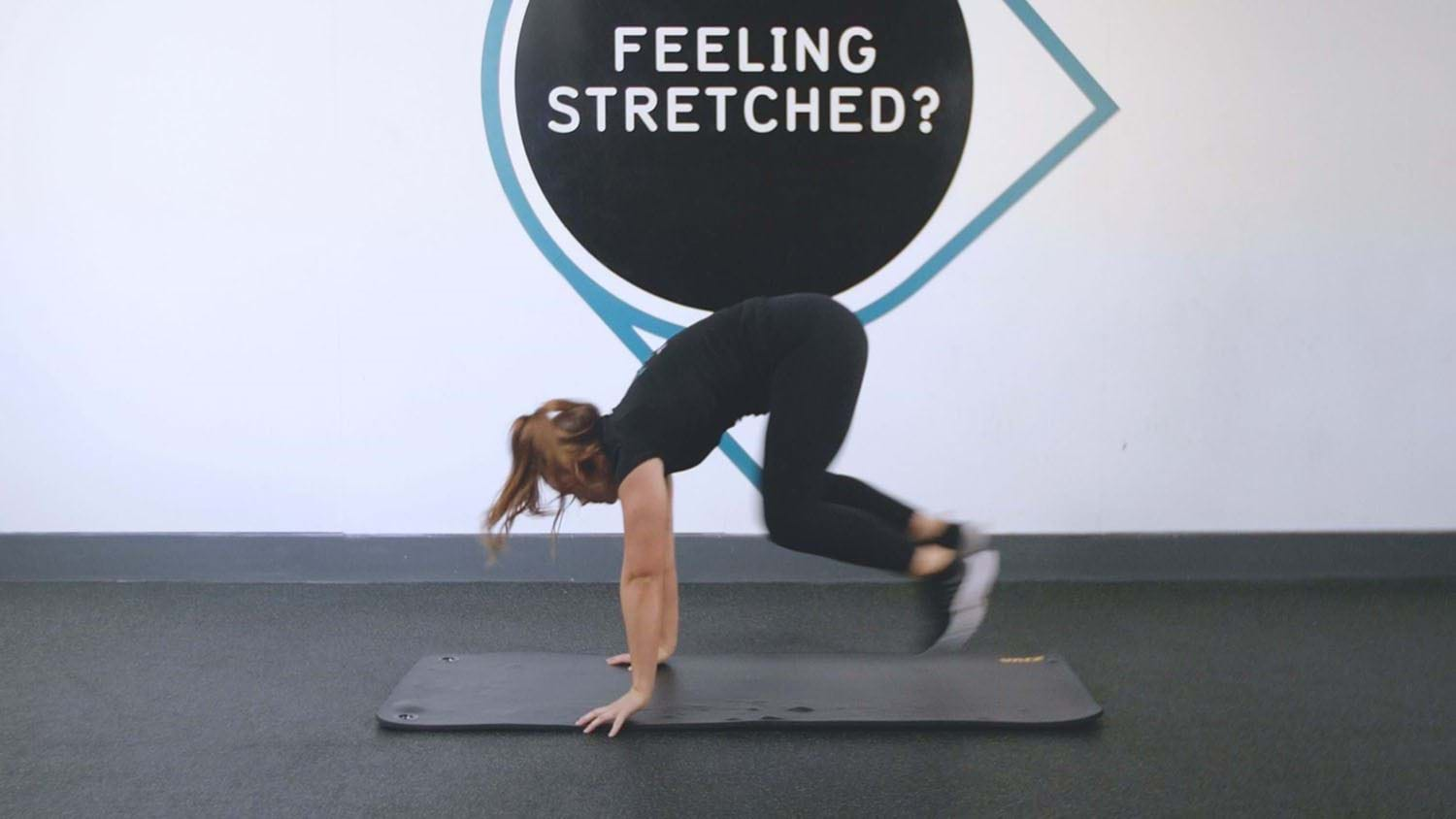Burpees
What is a burpee?

Developed in the 1930s by a physiologist called Royal H. Burpee, the burpee is great full-body exercise to tone your whole body, build strength and improve cardiovascular endurance.
For every single burpee you perform, you will work your arms, back, chest, core, glutes, quads and hamstrings, so it's a great exercise to up your energy expenditure and tone your whole body. Some research suggests that the high-intensity nature of burpees can help burn up to 50% more fat than moderate exercise, so if you're looking to burn fat and tone up, try incorporating burpees into your exercise routine.
Further benefits include increased balance and coordination which will help you perform at your best in everyday activities, plus maintain a healthier heart and lungs.
The World record for burpees performed in a 24-hour period is held by Cameron Dorn from South Carolina who did 10,105 one day in 2014.
Don't worry about breaking records yet though! If you're new to burpees, check out our top tips and how-to guide below.
Check out our other glute exercises: Mountain climbers, Kettlebell swings
COMMONLY ASKED QUESTIONS ABOUT BURPEES
Burpees feel so hard because it is a full body exercise that involves speed and power, so it can fatigue you pretty quickly relative to other bodyweight exercises. It also requires coordination and a good baseline of strength to perform.
It depends. Burpees can help to build muscle if you're a beginner and new to resistance training but if you're main goal is to build muscle, weight training would be recommended.
Burpees are an exercise which can cause a lot of stress on the body and some people may find that this exercise is not suitable for them. To some people it can be stressful on the shoulders, wrist and knees. If you experience pain or don't feel comfortable when performing this exercise, please stop and seek advice from a personal trainer or qualified medical professional.
You can lose weight by doing just burpees, provided you are in a calorie deficit which is key to weight loss.
Burpee tips
- As burpees work the whole body we recommend warming up before you start with some dynamic stretches and a few minutes of cardio
- Keep your abs locked inwhen you perform the movement to help keep your body in a stable braced position.
- Don't hold your breathe - keep breathing!
- Place hands on the floor first, before pushing your legs out into plank position.
Burpee Variations
How to do a Burpee
Level: Intermediate to Advanced
Equipment: no equipment required
- Stand tall with feet shoulder width apart.
- Brace your core and drop into a high plank position by placing your hands on the floor, shoulder distance apart, then kick your feet behind you. Try to keep your back straight and abs engaged.
- Allow your chest to drop to the floor lightly, keeping elbows tucked to either side of the body.
- Push yourself up by extending your arms and jump your feet back so that they land just below your hands.
- Swing your arms up and jump as high as you so your feet leave the ground.
- Complete the required amount of reps.
How to do a half burpee
Level: Beginners to Advanced
Equipment needed: None
- Stand tall with feet shoulder width apart.
- Brace your core and drop into a high plank position by placing your hands on the floor at shoulder distance apart, then kick your feet behind you.
- Jump your feet back up towards your hands.
- Then jump as high as you so your feet leave the ground.
- Complete the required amount of reps.
How to do a one legged burpee
Also known as a single leg burpee, this exercise is mainly focusing on balance.
Level: Advanced
Equipment: No equipment
- Standing on one foot, reach your arms out to touch the floor at shoulder distance apart.
- When your hands touch the floor, transfer your bodyweight to your arms, and kick the leg you're balancing on behind you into plank position - keeping that core braced.
- Bring the extended foot between your hands and then jump as high as you can with that leg whilst maintaining balance.
- Repeat however many reps needed and repeat with the other leg.
If you’re not sure if any of the above exercises are suitable for you, please consult your doctor before you start it. Need guidance on how to perform the exercise? Ask a personal trainer at your gym.